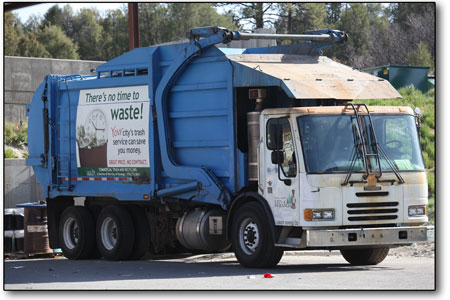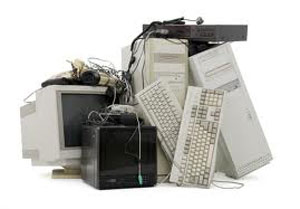 |
|
|
Singled out
City’s single-stream recycling program successful despite contamination
by Tracy Chamberlin
It was supposed to make things easier; drop it all into one container and drag it out to the curb.
Less hassle meant more people might find the time to join in, helping Durango haul less to the landfill and more to the Recycling Center for a new lease on life.
And, in many ways, that’s just what happened.
The number of city residents participating in single-stream recycling is almost triple what it was before the program was introduced last year.
“I think that participation has been very successful,” said Roy Petersen, Director of City Operations.
One thing that’s keeping some trucks moving from the Recycling Center to the landfill, instead of the marketplace is contamination. It doesn’t happen often, but it can happen.
“There’s a point where there’s so much contamination it does have to go to the landfill,” Petersen said.
During the first couple months of the program, city workers would inspect the bins before taking them. Even pushing them back if there were too many contaminants.
Those extra steps might have paid off. Petersen said contamination at the residential level isn’t a big problem. It is, however, when it comes to the public dumpsters.
Scattered throughout town, those containers intended specifically for recycled glass, which is the one item that can’t be included in the single-stream bins, are being used as trash dumpsters. According to Petersen, the problem was worse at the start of the program and has since improved.
“Today, I’d call it a medium contamination problem,” he said.
As for the occasional residential contaminator, the two most common types are glass and organics, like watermelon rinds and potato peels.
Durango unplugged: City takes those
|
Keeping those types of materials out of the single-stream bins and drop-offs is one way to reduce contamination. Another is to rinse out recyclables like plastic juice bottles.
One bottle in the recycle bin with just a bit of juice left might not stand out, but when recyclables are compressed into bundles, all that juice makes a mess. And if there’s too much contamination, the city gets dinged – even having to pay to get rid of the bundle rather than getting paid for it.
After all, recyclables are a commodity.
With increased participation in the program comes increased volume and the possibility for increased revenues. Since the program was introduced, the commodities price of recycled materials has been steady, Petersen said.
The participation rate, however, has gone up considerably.
Petersen said the City had about 1,350 residences taking part in the recycling program prior to the switch to single stream. With 4,580 in the city, that meant about 30 percent of Durango households participated.
Today, he said, 3,800 to 3,900 are signed up for single stream. That’s more than 80 percent. And, the volume of recycled material has gone up accordingly.
And it’s not just the residential piece of the puzzle. More than 450 businesses are signed up as well.
But, just as the number of city residents participating went up, the number of county residents participating went down.
County residents can no longer drop off recyclables at locations throughout town. “That had a negative impact on the overall volume,” Petersen said.
The only place to bring them is the Recycling center south of town on Tech Center Drive. And it costs $1 per 60 gallons for non-city residents.
Also, many might have signed up for recycling service with other providers outside the city limits.
However, with such an increase in participation in town, the city had to order additional bins and now has a stock of both 60- and 90-gallon sizes.
When talks about updating the recycling program began about three years ago, it was operating at a deficit of $245,000. It was thought a more efficient, single-stream program plus increased fees, which went up by $3 per month for residential pickup, would make the program more sustainable.
For now, it’s too soon to tell if the program is in fact paying for itself.
Petersen explained when it first began at the tail end of 2013, there was some overlap with the old way of doing things. So, they’ve only been able to get numbers on the single-stream program since the start of 2014.
In addition to the single-stream program, the City also changed the way it processes materials by updating the outdated and maxed-out recycling facility. At this point, construction on the new facility is complete.
Petersen said the city is always looking to improve efficiency, but there are no more changes planned.
After all, this year will be the first chance for city officials to get real numbers on the recycling program and its cost recovery. It appears, he added, that they are headed in the right direction.
At its heart, though, the changes have always been about diverting material away from the landfill.
With less than 5 percent contamination, according to Petersen, and an increase in the number of Durango participants, they just might be making a dent.

 Single stream isn’t the only recycling program working for the city.
Single stream isn’t the only recycling program working for the city.